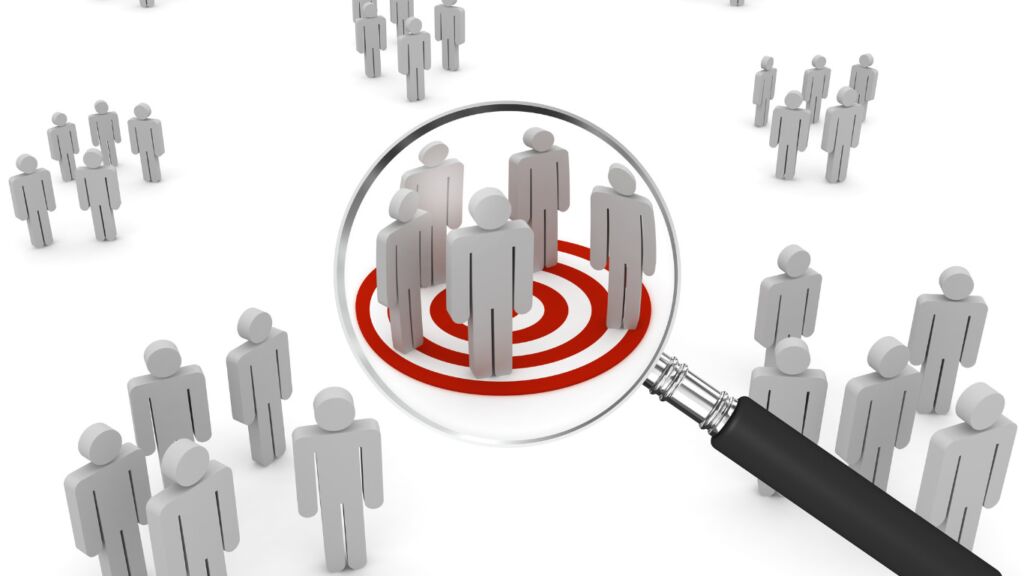If you’ve had many marketing conversations at all, you’ve probably noticed that marketing lingo is extensive and interpretations can vary.

One example we find pretty common is ambiguity around the terms: target market, buyer personas, and the ideal client profile. Knowing the similarities and differences, along with how they should compliment each other is key in order to craft an effective marketing strategy.
Target Market: The Big Picture in Your Marketing Strategy
A target market refers to a group of potential customers with similar needs, wants, and characteristics that your business aims to serve. Identifying your target market allows you to tailor your marketing efforts, ensuring they resonate with the right audience.
To determine your target market, you’ll need to consider factors like demographics (age, gender, income), geographic location, and psychographics (interests, values, lifestyle). An example could be a local organic bakery targeting health-conscious consumers within a specific age range living within a 10-mile radius of their store.
Understanding your target market helps you make decisions like choosing marketing channels, allocating resources effectively, and putting together your marketing message.
It also enables you to identify potential market segments that can benefit from specialized offerings.
Buyer Personas: Humanizing Your Audience
Buyer personas are fictional representations of your ideal customers, created to help you understand their needs, preferences, and motivations. They bring your target market to life by adding a human touch to your marketing efforts.
A small business might have multiple buyer personas. They might have different buyer personas for different product or service offerings, or they might have different buyer personas for each stage of the Customer Journey.
Creating buyer personas involves gathering information about your existing customers and prospects, and organizing that data into a detailed profile. The level of detail can vary, but should likely include demographic information, goals, challenges, and personal preferences.
For instance, a buyer persona for the organic bakery could be “Healthy Hannah,” a 35-year-old yoga enthusiast who prioritizes organic, locally sourced ingredients.
Buyer personas should be used in your marketing campaigns to help you develop personalized messages that resonate with your audience. When crafting marketing communication, you can ‘speak’ to your ‘Healthy Hannah’ to help sharpen your message.
You can also use buyer personas to tailor your product offerings, promotions, and customer service to address the unique needs of your customers.
Ideal Client Profile: Zeroing in on Your Dream Customer
An ideal client profile focuses on identifying the specific characteristics of the customers who are the best fit for your business. These are the customers who align with your business values, generate the most revenue, and are likely to be loyal advocates for your brand. (Note: don’t confuse your Ideal Customer with your ‘favorite’ customer. They are not mutually exclusive.)
Developing an ideal client profile requires a pretty thorough analysis of your existing customer base, as well as your business goals and values. For the organic bakery, the ideal client might be an environmentally conscious customer who values supporting local businesses and is willing to pay a premium for high-quality, organic products.
Having a clear ideal client profile in hand allows you to concentrate your marketing efforts on the customers who are most likely to drive business success, helping you maximize your return on investment and ensure long-term growth.
Comparing and Contrasting: Target Market vs. Buyer Personas vs. Ideal Client Profile
While target market, buyer personas, and ideal client profile are all important marketing concepts, they serve distinct purposes as a part of your marketing strategy:
- Target market provides a broad overview of your potential customers, helping you understand the market landscape.
- Buyer personas humanize your audience, enabling you to create tailored marketing messages that resonate with your customers.
- Ideal client profile helps you focus on the most valuable customers, ensuring your marketing efforts yield the best results.
Understanding when and how to use each concept effectively is crucial for creating a cohesive marketing strategy and an effective marketing plan.
Conversely, misunderstanding the concepts will cause confusion, misalignment, wasted time and money. In short – a mess.
Putting It All Together: Creating a Cohesive Marketing Strategy
Small businesses need to be clear on their target market, buyer personas, and ideal client profile. Using them correctly will help develop a marketing strategy that effectively targets the right audience with the right message. Here are a few implementation tips:
- Use your target market analysis to inform your overall marketing strategy, selecting appropriate channels and crafting messages that appeal to the identified audience.
- Develop buyer personas to create personalized marketing campaigns, ensuring your content resonates with your audience and addresses their needs, goals, and challenges.
- Focus on your ideal client profile to optimize your marketing efforts, targeting the customers who are most likely to drive business growth and success.
You will need to continually review and update your target market, buyer personas, and ideal client profile over time, as your business evolves and market conditions change. We recommend a quick checkup on them every 3-6 months, and a little more thorough review annually.
This will help you stay agile and adaptive, ensuring your marketing strategy remains effective over time.
Navigating the Marketing Landscape with Confidence
Your business needs a well-rounded marketing strategy that resonates with your audience and drives business success. Understanding the differences between target market, buyer personas, and ideal client profile are essential pieces of that.
These are not thought exercises to be completed at a conference and put on a shelf to collect dust. They need to be a part of your marketing culture. If you use these concepts effectively, you’ll be better equipped to navigate the complex marketing landscape, ensuring your small business thrives in today’s competitive environment. So, take the time to develop a deep understanding of your target market, humanize your audience with buyer personas, and focus on your dream customers by creating an ideal client profile.
